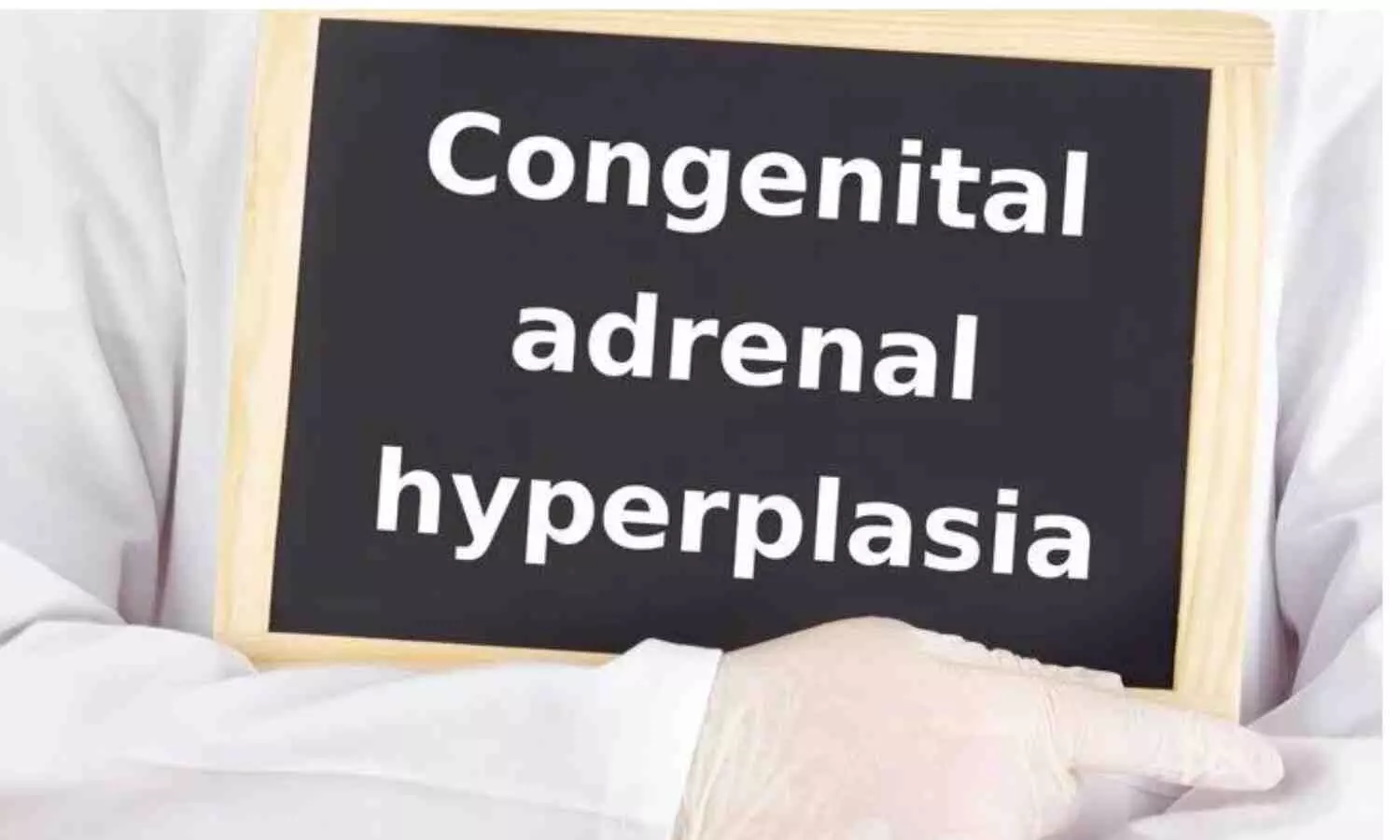Crinecerfont outperforms placebo in lowering increased androstenedione levels in young Congenital adrenal hyperplasia patients: NEJM

United States:
A recent study published in The New England Journal of Medicine concluded
that crinecerfont performed a placebo in reducing increasing androstenedione
levels in Congenital adrenal hyperplasia pediatric participants.
Crinecerfont was also associated with decrease in glucocorticoid dose from
supraphysiologic to physiologic levels.
Congenital Adrenal
Hyperplasia is a genetic condition that affects the adrenal gland located at
the top of each kidney. It is a group of rare inherited autosomal recessive
disorders characterized by the deficiency of one of the enzymes that are needed
to make specific hormones. The formation
of too little cortisol, too little aldosterone and too many androgens are the
symptoms of CAH. It occurs due to 21-hydroxylase deficiency and requires
treatment with glucocorticoids, usually at supraphysiologic doses, to address
cortisol insufficiency and reduce excess adrenal androgens. Considering this Kyriakie Sarafoglou, M.D
from the University of Minnesota Medical School and College of Pharmacy,
Minneapolis (K.S.) et.al, conducted a study to evaluate the effect of
crinecerfont in Pediatric patients with Congenital Adrenal Hyperplasia.
In order to do this, the
study team carried out an international, randomized experiment in which
pediatric CAH patients were randomly allocated to receive a placebo for 28
weeks at a ratio of 2:1. They maintained a stable glucocorticoid dose for 4
weeks, then they adjust the dose for the target of 8.0 to 10.0 mg per square
meter of body- surface area per day.
A total of 103
participants were randomly assigned to the study. They move the baseline
aldosterone level’s primary efficacy end point to week 4. The percentage change
in glucocorticoid dosage from baseline to week 28 with androstenedione control
maintained was the secondary endpoint.
The study revealed that:
- At 28 weeks, 100 (97%) of the 69
participants who were assigned to crinecerfont and 34 who received a placebo
were still in the trial. - The
mean androstenedione level was 431 ng per deciliter (15.0 nmol/liter) and the
mean glucocorticoid dose was 16.4 mg per square meter per day at baseline. - By week four, androstenedione levels in the
crinecerfont group were significantly lower (−197 ng per deciliter) while they
were higher (71 ng per deciliter) in the placebo group. - Before the morning glucocorticoid dose, the
observed mean androstenedione value was 208 ng per deciliter (7.3 nmol/liter)
in the crinecerfont group and 545 ng per deciliter (19.0 nmol/liter) in the
placebo group. - By week 28, the mean glucocorticoid dosage had
increased by 5.6% with placebo but had dropped by 18.0% with crinecerfont
(while maintaining androstenedione control). - The most frequent side effects were vomiting,
pyrexia, and headaches.
“Crinecerfont was more
effective than a placebo in children with CAH at lowering elevated levels of
androstenedione. It was also linked to a reduction in glucocorticoid dosage
from supraphysiologic to physiologic levels while maintaining androstenedione
management”, the researchers concluded.
Reference
Sarafoglou, K., Kim, M.
S., Lodish, M., Felner, E. I., Martinerie, L., Nokoff, N. J., Clemente, M.,
& the CAHtalyst Pediatric Trial Investigators. (2024). Phase 3 trial of
crinecerfont in pediatric congenital adrenal hyperplasia. New England
Journal of Medicine, 391(6), 493-503. https://doi.org/10.1056/NEJMoa2404655



